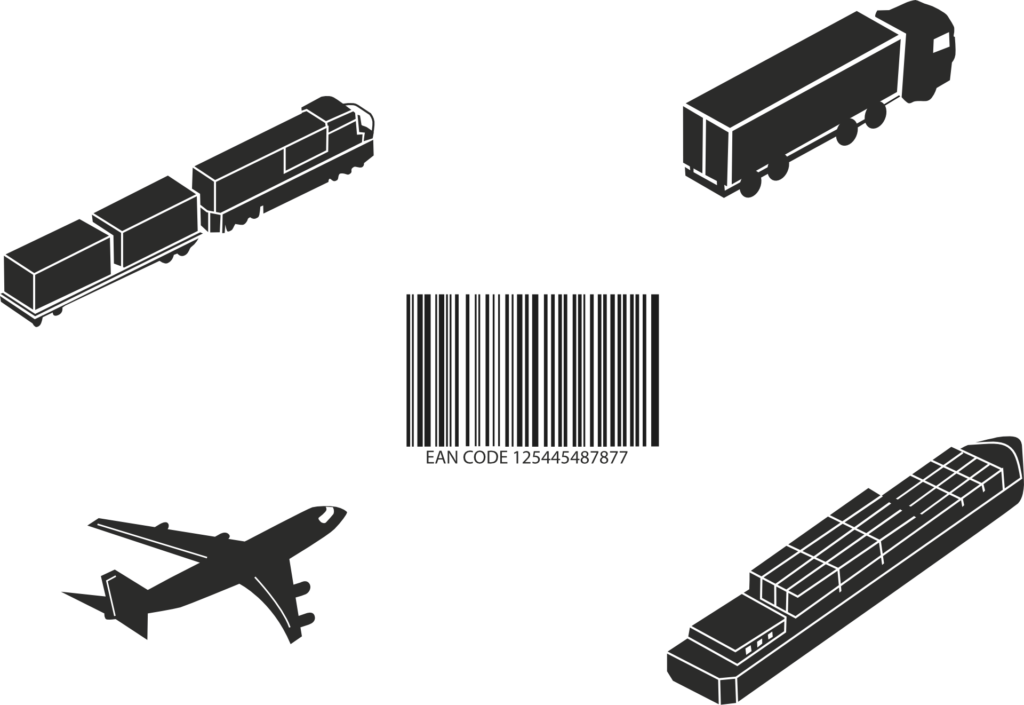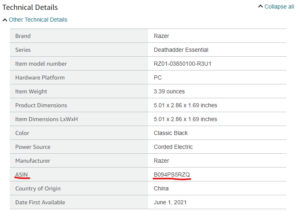Understanding Amazon ASIN: A Comprehensive Guide

If you’re new to selling on Amazon, the company’s persnickety requirements can be overwhelming. Amazon’s terms can seem overboard if you’ve used other platforms to sell online. But there’s a good reason they’re the world’s top retail platform, and its terms are part of the magic.
As part of its system, Amazon assigns unique inventory numbers to every item, called an ASIN. You may wonder what an ASIN is, but it stands for Amazon Standard Identification Number.
It’s more than just an inventory tracking number that ensures your customers get your product exactly as ordered — it also prevents your competitors from stealing your great ideas.
Learn more about what is an ASIN number, this critical element of becoming a successful Amazon seller.
What is an Amazon ASIN?
The Amazon ASIN is a 10-digit alphanumeric code the company assigns to every product it offers. Before expanding in 1998, Amazon used it to track products that were not books. If you’re “of a certain age,” you may remember that, way back in the late 1990s, Amazon started strictly as an online bookstore.
Books have their unique designators, which we’ll touch on later.
The ASIN on Amazon provides a unique number for tracking inventory. Because the range of Amazon products is constantly growing, using an alphanumeric combination (both letters and numbers) delivers a broader selection of unique identifiers.
Amazon uses the ASIN to:
- Track products on its website
- Find products in the warehouses
- Track the picking and shipping of products
- Allow customers to find the exact product they desire
If you plan to sell your products on Amazon, you must have an ASIN for them.
Why are ASINs important for sellers?
ASINs serve as the vital link between your products and potential customers. Here are a few reasons why ASINs are essential for sellers:
- Product identification: ASINs uniquely identify each product, making it easier for customers to find and purchase the item they want.
- Categorization and cataloging: ASINs help Amazon categorize and catalog products, ensuring they appear in the appropriate search results and categories.
- Product variations: ASINs are also used to manage different interpretations of the same product, such as different sizes, colors, or styles. This allows sellers to list multiple variations under a single product listing, making it easier for customers to compare and choose the option that suits them best.
The importance of ASINs for buyers
ASIN is important for buyers as it helps them find the products they want to purchase quickly. It allows buyers to compare prices, read reviews, and access all relevant information about a product, such as its price, customer reviews, and seller ratings. ASINs also make it easy to track products, which can be helpful during sales or promotional periods when products sell out quickly.
How does ASIN work?
When a seller lists a product on Amazon, the platform generates a unique ASIN. This ASIN is then used to identify the product throughout its lifecycle on Amazon. It is important to note that each product variation, such as different sizes or colors, will have its unique ASIN. This means that a single product with multiple variations will have multiple ASINs.
What is ASIN number? The ASIN is used in every aspect of Amazon’s product life. It is used in product listing, inventory management systems, search engines, and customer reviews. This means that the ASIN is critical to how Amazon manages its products and provides services to its customers.
Understanding ASIN variations
ASIN variations are variations of the same product, such as different sizes, colors, or styles. These variations are grouped under a single product listing, making it easier for customers to compare and choose the option that suits them best. Here’s what you need to know about ASIN variations:
- Parent ASIN: The parent ASIN represents the main product listing and is usually associated with the default option or the most common variation. It acts as the umbrella under which all the variations are listed.
- Child ASIN: Child ASINs represent the individual variations of the product, such as different sizes or colors. Each child ASIN is unique and has its own set of attributes, such as price, availability, and product images.
Understanding ASIN variations is essential for managing your product listings effectively. By adequately organizing and optimizing your variations, you can provide a seamless shopping experience for your customers and increase your chances of making a sale.
How to Find the ASIN Number for Amazon Products
If you check the sales page, it’s easy to find the Amazon ASIN for any product on the retail platform.
Product Description and Product Detail Pages
If you scroll down any sales page on Amazon, you’ll find a bolded block section called “Product Details.” This section shows product specifications, shipping terms, average customer reviews, and sales rank.
Also in this section are the product’s various identification numbers, including the ASIN.
The URL
Another way to find a product’s ASIN on Amazon is to look at the sales page URL. This is the link in your address bar. Amazon also uses the ASIN as the sale page address, and you’ll find it after the Amazon URL.
Why You Need an ASIN Amazon Number
To sell your products on Amazon, you’ll need to list them under an ASIN. The surprising thing is that Amazon may already have an ASIN for your product. That’s because there are two types of ASINs when it comes to selling on Amazon — regular ASINs and unique ASINs.
For example, if you find yourself with a crate of a well-known toy to sell, other resellers may have already listed it. In this case, you’ll use the same ASIN for your toys. Amazon will have one product page, even with several different suppliers.
On the other hand, if the product you’re selling is unique or not yet listed, you’ll get a new ASIN from Amazon.
How to Get an ASIN Number from Amazon
Before listing your products, you must know how to get an ASIN number from Amazon. Research and take the following steps to reduce delays and avoid seller suspension.
Search for a Regular ASIN
When you’re ready to list, make sure there isn’t already an existing ASIN for your products. If you only have a handful, you can search the platform manually.
However, if you have a large inventory, you may want to invest in an Amazon ASIN lookup tool to automate the process.
Getting a Unique ASIN
You’ll need to create a new ASIN or a self-branded product if your product is entirely new to the market. For brand-new items, the process is pretty straightforward.
Add your product to the seller dashboard, and Amazon will assign it with a unique ASIN. Remember that others with the same product will use the same identifier.
You’ll need a Global Trade Item Number, or GTIN, to add new products. These are internationally standardized ID numbers registered by manufacturers. You’ll find them on the product’s bar code or packaging.
Some GTINs you may already know are:
- UPC (Universal Product Code)
- EAN (European Article Number)
- GTIN-14 (Global Trade Item Number)
Ensure you have this information from the manufacturer.
If you make your products, register them through GS1-US to get EAN/UPCs that Amazon will accept.
ASIN vs. ISBN: What’s the Deal?
GTIN numbers apply to products, but what if you’re selling books? Amazon, the original online bookstore, still uses ISBNs for physical books. ISBN stands for International Standard Book Number and is universally recognized for tracking and storing information about physical books.
If you’re reselling books, you can find the ISBN on the back cover bar code or inside on the copyright page.
To register an ISBN for a unique physical book you want to publish and sell on Amazon, you’ll need to register with Bowker.
Note, however, that digital books sold for Amazon’s proprietary Kindle program are cataloged with an ASIN, like other products.
Why You Need the ASIN Amazon Assigns
You may think using the ASIN Amazon gives you is inconvenient, especially if you have your own inventory control system. However, Amazon offers an advantage for protecting your brand through its ASIN system.
If you’ve worked hard to create a unique product and brand, you’ll want to consider the platform’s brand gating program.
First, see if your product is eligible for the program. You may have to submit a package including trademark or patent information. The benefit is that Amazon will restrict others from selling products with your brand or design, protecting your intellectual property.
Downside for Resellers
Brand gating can cause a few obstacles for resellers. Amazon has already restricted reselling big-name brands, and resellers may have to submit receipts and certificates proving the products are authentic.
Is It Worth the Trouble?
Now that you know what an ASIN is and its critical role in Amazon selling, you’ve conquered another step to creating a successful eCommerce business.
Recent reports show that Amazon resellers bring in more than 50 percent of the company’s yearly revenue. As many as 86 percent are profitable, with 67 percent good in their first year of selling.
These numbers are exciting and frightening, but the risk can pay off if you’re willing to do your homework.
However, as many as 76 percent of sellers also worry that Amazon will shut them down. The company’s staggering dominance in the eCommerce world can make hiccups terrifying.
So, make sure you have competent representation if you encounter any problems by connecting with ESQgo, a law firm specializing in protecting Amazon sellers.



